Go behind the scenes and meet "Pin Up Camera Chick" Marie IleneBy Christina Schultz We started out discussing the effects of COVID on the film industry, but I’d like to dive right into Marie’s fascinating career in film and her rockabilly style.
CS: So where did you go to film school? MI: I went to the University of North Carolina School of the Arts, a small conservatory with only 80 people in my graduating class, so I got a lot of individual attention. We started making movies immediately, which gave me great technical experience as a cinematographer. When I moved to LA, I started working right away. CS: Well that's encouraging to hear that it can be done! What filmmakers were your biggest inspiration or just your favorites in general? MI: I am all over the map. My editors hate me because I’m a constructive filmmaker, which I learned from Alfred Hitchcock. Like him, I only shoot exactly what I want, leaving my editors no choice. I'm also a huge fan of Tim Burton. Even though the music video industry was tanking when I started out, I liked music videos by Mark Ronson, Michel Gondry and Spike Jonze. I was really into telling a story visually and I feel like all of them do that, as opposed to shooting for a sitcom, for example. CS: That is quite a range, like you said, which also applies to the projects you’ve worked on. Tell me about what you've created so far and how those projects came into fruition. MI: It's hard to make a living as a filmmaker - the age old artist conundrum - because I only want to do things that speak to me but then you have to pay the bills, right? Which is why I worked on the TV show Biggest Loser for three years because it was good money but I wasn't making art. I was learning a lot about documentary filmmaking because that’s pretty much what reality TV is. Around the same time I started doing short films. This will sound new agey but I feel like my favorite projects just came to me, which was the case with Pole Tricks. A [male] producer was looking for a female director because of its racy, yet sensitive subject matter. I am a very sexually liberated woman so a story about a stripper didn't scare me. The writer was telling her own life experiences in LA. I clicked with her, I understood what she was saying and the struggle she wanted to show and I thought let's do this, this sounds really cool. On the complete opposite side of the spectrum is 588, a stop motion film set to an Emily Dickinson poem. A director that I worked with years before told me about an experimental project where she recorded people reciting poems like a Greek chorus and gave the recordings to filmmakers to have them make whatever film they wanted in response. It was so weird but I was totally in. I had never done stop motion before but I had a vision and made it happen. So all these projects are random but they're super me now. Bombshells and Dollies was another project that fell into my lap. A friend of mine from film school was working with the director on some preliminary interviews. I helped out with an interview in LA and afterwards the director was picking my brain, seeing as though I was the target demographic: a woman into rockabilly. It eventually dawned on him that he needed a woman, which I have to give him credit for. A lot of men would have said I can tell this story about women. Not only did he need a woman to avoid being the weird dude coming over to the pin ups houses to interview them, but also to get those little extras. At the interview, I suggested we get some B-roll of her closet. He asked why and I said trust me, everyone wants to see her closet! He needed a woman for those kinds of things and then as we ramped up into production I just got more and more involved. CS: So you did production and cinematography, and it sounds like you were advising as well?
MI: Yeah, I really consider myself a creative producer on Bombshells. My credit is just co-producer, but I helped shape the story. It was a cool position because normally if I’m shooting an interview as a cinematographer or camera person, the director does the interview and then it’s over and I pack up, but he would do the interview and then turn to me and ask if I had any questions. So I was able to help shape the narrative and when I heard something interesting, I was allowed to pursue it. CS: Well that's nice there was that openness when you were working on the film. MI: It was really. I have to say with men it's one or the other - either they're totally in charge or they’re super collaborative. I'd never worked with a woman who made me feel like I couldn't chime in, whereas I work with a lot of men who don't want anyone to chime in. CS: I’m glad to hear there are men in the industry who are open and willing to collaborate! You already mentioned it but you are part of the rockabilly scene and you also are into burlesque, is that right? MI: Yes, the two things were happening simultaneously. We were in full-scale production for three years on the documentary, so 3 VLVs. At the time I was dressing very vintage-rockabilly - my husband is also big in the scene - but I was more punk rock and goth growing up, so it's an interesting trajectory (although a lot of the pin up girls are recovering goths). In any case I got tired of wearing black all the time. I started wearing feminine dresses with an edge and I liked being in front of the camera. The more people I met at Vegas, the more I got sucked into the scene, which I’m super happy about. A part of that is also burlesque, because a lot of the girls are burlesque performers, too. At first I was on the sidelines but my husband encouraged me, knowing my background in theater, and he was totally okay with me taking my clothes off on stage. When we were wrapping up production on the film, I was rising in the burlesque scene and in the Los Angeles burlesque community and now I produce two shows a month. CS: Awesome! Did you ever consider entering the Viva Las Vegas pin up contest? MI: No, but people ask me all the time because now - even after the filming is over - I'm there every year as part of the burlesque that goes on. I've definitely thought about it because it would be really fun. But honestly I don't think I can handle it - I mean seeing what these girls go through up close, they look so perfect and they're all such gracious losers - it must be an amazing experience, but I would be so nervous. In burlesque, my costumes have to be on point and detail-oriented too but I'm dancing and doing the tease so there's a distraction and you're taking the clothes off, so you don't need that much perfection. I really have to give these girls credit. CS: Who of the contestants that you had seen and worked with on the project were you most impressed by or inspired by? MI: That's hard because I'm good friends with some of them, but I will say Marilia Skraba from Brazil. She is really amazing, I love her. I get to hang out with her every year at VLV - except this year unfortunately. In Brazil there wasn't a real rockabilly-pinup scene, so she started one and has her own clothing brand, which she created the audience for. CS: The contestants have done impressive things! Victory Violet stood out to me in particular because of her involvement in the body positivity movement, which made it really interesting from a feminist perspective. How do you feel about body positivity? Is it an underlying principle of the vintage rockabilly pinup scene or is that just something the film emphasized? MI: Yeah, it definitely has become a big thing in the vintage community in the past couple years because once you feel accepted, you’re going to thrive. The style of clothing is made to celebrate curves, so if you are a curvier woman, you'll look good. But even if you’re 90 pounds, the clothes still look cute on you. In the beginning, though, you did have to search a little bit more to find clothes, which created this camaraderie because if you were an “odd size” you would share tips with others. We were being really honest about our bodies and talking about them in a positive way - not what we want to change about them, it just felt so empowering. We’re basically playing dress up. When I walk down the street, even in Los Angeles, in victory rolls and a polka dot dress, I'm gonna get looks. And that’s the cool thing about pin up for me: we're all misfits, but still part of this awesome community. CS: I think I already know the answer to this one, but do you consider yourself a feminist? MI: I definitely consider myself a feminist, although everyone has a different definition of it. My definition is celebrating femininity in whatever form it takes for you as a person. I also work with other women to help them find their voice, since I’ve found mine. I'm very fortunate to live in Los Angeles - I work with female filmmakers all the time, I'm around all these really strong women. I’ve learned to stand up for myself and demand respect, and encourage other women to do the same. CS: That is really important work, so thank you for doing what you do!
0 Comments
Breaking Through the (Sugar) Glass Ceiling, One Film at a TimeInterview conducted by Christina Schultz Christina Schultz: Hi Alicia! You’re from Toronto. What was it like growing up there? Alicia K. Harris: I grew up in Scarborough, the greenest part of Toronto, so my childhood was mostly spent outdoors. As I got older and I became interested in the arts, I went to downtown Toronto to attend concerts - I’ve been to over 100! - and arts events. There’s a lot of cool things happening here. So I had the best of both worlds: my childhood in East Toronto gave me the freedom you wouldn’t have downtown to explore and be imaginative, which helped developed my sensibilities as a person and as an artist, yet I still had an access to so many events all over Toronto. CS: With this exposure to the arts, at what point did you realize film was your calling? AKH: It took me while! As a kid, I was really interested in art. I went to art camp, took painting classes, learned how to papier-mâché, etc. Then I became interested in music. I bought a piano, was in the school band and even wrote my own music. But none of it felt right. I started making films for fun but never thought of it as a career. My sister and I would recreate SNL videos and since nobody our age watched the show we would just pretend they were our own [laughs]. But we also had our own original sketches and I would do the editing-technical work. And then I would make montage videos with my friends. Before Snapchat existed, I was the original Snapchat. I had my digital camera and everyone would be annoyed that I was doing it but then they would see the finished product and say oh my gosh, thank you for creating this beautiful time capsule of our friendship! In high school I also directed plays which I loved because it combined all the things I like in one: music, visual art, being a leader. And film encompasses all of them. When I finally had to choose what I should do for school, I realized I had been a filmmaker all along. CS: Why did you found Sugar Glass Films? AKH: When I started film school to develop my skills as a director, I wasn’t aware about the unevenness in the film industry. It wasn’t until later on that I learned the truth when I attended a panel with female filmmakers discussing the struggles they’ve faced and the overall lack of women in film. They stated that only 3% of cinematographers and 5% of directors are women. But I thought: Wait a minute! Half of my program is made up of women! Yet somehow the numbers made sense. Every movie I had seen in film school featured white guys. All of my teachers were white guys. I had written films about white guys. I had been conditioned to think the default story was about white guys. It made more sense to me to write a film about white guys than it did to write about my own experiences. So once I learned about the inequity, my entire life changed. At the end of film school, you have to pitch your film to producers. Rebeca Ortiz, a feminist who also wanted to make films about women and marginalized people, decided to work with me on Love Stinks. Our collaboration was very successful but it was initially met with resistance because it’s about girls looking at porn. We’ve seen this story with guys a million times. Our film is very PG but people didn’t want to audition for it. Girls talking about boobs and periods is completely normal but not seeing this in film, you feel unimportant or unworthy of representation. So Rebeca and I were dedicated. She’s Latinx, I’m a black woman. We want to uplift our voices and the voices of women and marginalized people. Yet these are stories that everyone can relate to. So, Sugar Glass Films is all about breaking the glass ceiling and closing the gap. That’s what we’re trying to do with the company. It made more sense to me to write a film about white guys than it did to write about my own experiences. CS: That’s amazing you had this enlightenment! Thinking about your short film PICK, did you face any discrimination or racism growing up? AKH: Yes, thanks for asking this question. PICK is about my childhood experiences. When you have afro-textured hair, people make comments about it and reach out to touch your hair. Just today, someone reached out and touched my hair. I always think I wouldn’t reach out and touch your face but it happens every day. These repeated experiences growing up, whether it was outward comments or subliminal messages, stay with you forever. This combines with not fitting into Eurocentric beauty standards. All my Barbies, the “pretty” people in the movies, everyone in commercials on TV had white with blonde hair - I don’t see me there. When I was 11, I chemically straightened my hair and I continued to do so for 12 years. I stopped once I started making this film. I thought I wasn’t beautiful with the hair that I had because my look wasn’t accepted. But I’m tired of feeling like I don’t fit into a space. I’m tired of reading about a black girl with an afro being told her hair isn’t “professional.” I’m tired of having my hair touched. I’m tired of the ignorance. With PICK I’m educating people about how their “little” comments and behavior can affect people, especially little children, over time. I’m also hoping people will empathize - it’s just hair. CS: It boggles my mind that people think it’s ok and I’m sorry you had to deal with it. Your other short film, Maybe if it were a nice room, is about another difficult topic: rape. Yet the aesthetic is so beautiful and the shots are reminiscent of still lifes. You have a simple poetic voice over accompanying the images. Why did you make the film this way? AKH: Depictions of rape created by male directors are graphic, disturbing, horrible images of women being violated. To me, those images are for men but they are not necessary. We never need to see rape or violence toward women. My film, however, is specifically for survivors, giving a voice to our pain in an artistic, non-graphic way. It might still be triggering but not as triggering as images of violence. CS: Absolutely. I was raped and know firsthand how difficult it is to discuss. Did you seek out therapy or was the film your therapy? AKH: First of all, thank you for sharing that with me. It’s obviously very difficult to talk about these experiences. The weird thing about me is that my identity as an artist and a filmmaker sometimes makes me forget that I’m a human being who needs additional support. When I made this film, I had a contest deadline to meet. I had two weeks to come up with a topic I cared about and I thought I could make a film about rape. I started to make it objective but it wasn’t good enough; I had to make it about myself. But it was also the first time I acknowledged something bad had happened to me after becoming a feminist and learning about consent. I had only told three friends about it. But the film happened so fast and there was no turning back. After it was done I found it was healing because I gave myself a voice in a situation in which I had no power. Once I shared my story publicly with others, I got an outpouring of support. I had people saying thank you for making this film, this is my story, too. The film was just the first step of therapy though. I had to seek out other support to ensure my mental health was not suffering. I learned about self care and to protect myself from my own emotions and trauma as a filmmaker. It was so healing and so empowering to make this film. CS: What women inspire you and your work as a filmmaker? AKH: Beyonce inspires me. Lemonade is everything I want to do with film. It’s uses personal, political, beautiful images to tell a story of pain. It’s music, poetry, documentary, fantasy, experimental film all in one. The cinematography is stunning. We see black women being portrayed as queens, royalty, ballerinas. This was the first time I got to see myself portrayed in such a positive way - I’ve never seen so many afros in a shot! Another woman I really admire is Ava DuVernay. She’s the first black woman to do so many things we’ve never done before. She may not achieve everything she deserves in her career, like winning best director, but she’s paving the way for me and the next generation. I also should add Issa Rae. She started out making the web series Awkward Black Girl which got super popular and bam! She got her own show on HBO, making her the first black woman to star in and to create a premium cable TV series. Insecure features completely normal black characters without stereotypes; they deal with normal issues (including racism). It’s super inspirational and super relatable. She’s another woman paving the way for me. CS: If you could work on a film with anyone, who would it be and why? AKH: I’m also going to say Beyonce. She is a passionate perfectionist to the core, which is my exact personality. And she’s not the Queen for no reason. What she does is groundbreaking. If I could collaborate with her, it would be magical. CS: What projects do you have coming up? AKH: I’m working on two stories that haven’t been seen. The first, PICK, will be done in August and then released into the festival world in 2019. The second, Abuela, directed by Rebeca Ortiz, is about a young girl visiting her grandmother from Chile for first time. They have to communicate non-verbally because they don’t speak the same language. CS: Well best of luck to you. We look forward to seeing more of your work in the future! Visit Alicia's website for more information about her upcoming projects: www.aliciakharris.com
*Special thanks to the Future of Film Showcase (FOFS) for making this interview possible!* **All images were provided to Femfilmfans courtesy of Alicia K. Harris. Young L(GBTQ)oveInterview conducted by Christina Schultz
Christina Schultz: Ji, your short film Nune, a tastefully done LGBTQ young adult romance, and the young adult graphic novel Red as Blue are thematically closely related, with the film appearing to be your inspiration for the graphic novel. Why did you choose to work with a similar set up? Ji Strangeway: Many artists go through phases or themes in their lives. Picasso went through his “blue” period where he only worked with blue and green colors. For me, I am obsessed with the coming-of-age experience of teens because of my experience growing up in middle-America while never fitting in with American culture. The prejudice and oppression I experienced created a deep void that I want to fill--not only for myself but for the kids who may also experience this. This caused me to closely identify with the unfulfilled potential that many youths continue to face. So my work will continue to focus on similar themes of LGBTQ love with a female-focus bent until I feel I’ve successfully exhausted and completed my job. CS: You didn’t illustrate the graphic novel yourself, so what made you transition from film to graphic novel? JS: I actually enjoy both the filmmaking and writing medium so it wasn’t exactly a departure from filmmaking when I created Red as Blue. The graphic novel format is a cathartic expression that allows me to tell a story in the most imaginative way I can as a writer. The book has mixed storytelling formats so it is not a traditional graphic novel. It’s designed to feel like a movie when you read it. The short answer is I haven’t stopped making films and will probably continue to work with mediums that I feel are the best format for telling a particular story. CS: Nune opens with a Carl Sagan quote: “We are made of starstuff.” The opening sequence then continues on with images of outer space, nature, the elements, smoke and even highways and eponymous character Nune’s eyes. The sequence is quite artistic and surreal, if I may say so. Why did you open the film this way? Can you tell us about the symbolism behind the opening imagery? JS: Yes. The galaxy intro sequence was a cinematic and metaphoric way of showing Nune’s POV of her “soul” coming to earth and the freedom that she felt before being born into this world, as well as the galaxy she escapes to when her world is too hard to handle. The planets become less etheric and more “concrete” when we merge through clouds to experience destructive aspects of earth elements. This part represents Nune’s descent into the brutal world she would encounter daily at school. In many ways, Nune is “coming down” from her high of escaping the world. CS: Did you edit the sequence yourself? JS: Yes, I’m actually an editor. Not by trade, but this is my god-given talent alongside with writing and being a visual artist. CS: This is a film nerd observation, but there is a cut in Nune from a planet in Nune’s hand which then becomes an egg as it is smashed. Dare I make a comparison to Kubrick? What or who inspired your style of editing and cinematography? JS: LOL. I would say the smashing egg transforming into a crushed planet is a style that is closer to Jean Cocteau’s filmmaking sensibilities; particularly the creative ways “special effects” were created before digital VFX came around. Cocteau’s 1950s film La Belle et la Bête (Beauty and the Beast) was fun to watch because the special effects were mechanical and super creative. Although I did not directly borrow from Cocteau, I tend to gravitate toward mechanical and creative effects without dependency on CGI. This is because it stimulates childlike wonder and creativity. The egg scene in Nune was simply a matter of making sure the close-ups of the egg and planet matched and the effect was achieved by a precise edit--a cut. CS: The character Nune, played by Brianna Joy Chomer, has a distinct background: she is half-Mexican, half-Armenian with two moms at home. Is she inspired by someone you know? JS: Nune has several elements that are borrowed from my life experiences, yet she is not autobiographical. I grew up as a Vietnamese in a Chicano neighborhood and in many ways, I was caught between two identities while trying to fit into American culture. After I moved to LA, I had a lot of Armenian friends and learned about how being gay is absolutely taboo in their culture. I felt that this needed to be brought out in some way. CS: Brianna, the popular cheerleader is cheerful and represents the light, metaphorically, but also literally. She has a much lighter complexion than Nune. How do their personalities line up with their favorites colors - Brianna, blue and Nune, red? Can you explain the significance of the main character’s favorite colors? JS: Yes, the colors are used archetypically and represent their personality and moods. Briana (the cheerleader) likes blue because it is an optimistic color and red is Nune’s color because it represents death. She is a cutter (she harms herself). The deeper implication of both colors reappears in Red as Blue (the adaptation and long-form novel). I’d hate to overtheorize, but subconsciously, the colors also represent the political divide in America between the “red” and “blue” states--and how this creates a cultural war and sense of separation. Love, in my stories, is an integration process that must happen to help us unite as people, this is why Red as Blue is entitled with an “as” rather than “and.” Love, in my stories, is an integration process that must happen to help us unite as people, this is why Red as Blue is entitled with an “as” rather than “and.” CS: You work with archetypal characters - the cool guy (or more precisely: the douche), the popular girl, the weird girl, the rich kids, the poor kid from the other side of the tracks. I sense some John Hughes influences...what were your favorite movies and whose work left the biggest impression on you? JS: Yes, like many teens, I was influenced by the iconic Hollywood teen films from the 1980s and The Breakfast Club as well as many of the Hughes films have become part of my coming-of-age experience. I love coming-of-age films and the one that influenced me the most is unfortunately out-of-print and obscure which is, Times Square (starring Robin Johnson and features Tim Curry). It was an attempt by the director Alan Moyle (Pump up the Volume, Empire Records) to tell a raw and lesbian love story. However, the studios heavily butchered the film and took out a lot of the girl/girl coming-of-age elements. It is still a fun and inspiring film for me to watch (I have a pirated version LOL). Classics like Rebel Without a Cause and Fast Times at Ridgemont High are my favorite coming-of-age films and who could not love Back to the Future? From an art film perspective, I’m influenced by almost everything from the French New Wave movement. The female filmmakers I respect are Catherine Breillat, Celine Sciamma and documentary filmmaker Lauren Greenfield (check out her work Generation Wealth). My guilty pleasure for the moment is Netflix’s teen episodic, Riverdale.* CS: Why high school? Did you have a similar experience (or witness something like it) in school yourself? You said in an interview you never had to come out. Tell our readers what that means or what that looks like. JS: High School is like the template for what you will see in the adult world. It’s a pressure cooker for what is going to become of human potential and the entertainment arts are in the best position to act as a “release valve” to properly shape the lives of youths and even transform them. This is mainly why I have an obsession with high school themes, to tell stories for kids who may feel underrepresented or misunderstood. I was not only witness but was also subjected to being mistreated and misunderstood as a teen. As for not coming out as a teen, I never felt that it was up to society to tell me whether being “gay” was right or wrong. As a child, I had no labels or sense of separation from others. So as I got older, I refused the idea that I was separate, gay or that there was a name to it. So I never “came out.” I just tried to be true to myself. I was in a survival state of protecting my individuality. At the same time, I was sensitive to the discrimination and how a large number of people in society didn’t share that attitude. For those who needed to know, they had to deserve to know. It was not something I would foolishly volunteer so people could beat up on me. CS: The coming-out story is obviously very important to you. Will you work with similar stories or themes going forward? What projects are coming up next for you? JS: Although the work I do may include the coming out process, I would say the aspect of “coming-of-age” is more important to me. I view “coming out” to be a plea for social acceptance, but the coming-of-age process is the deeper part that affects all of us, not just gays. It’s about socially coming into being and staying intact as the beautiful children we came into the world as. Coming out is focused on the need for social acceptance, which is not a bad thing. But it is a debilitating position. It would be like begging a man’s world to accept us as females. It is better to just be a female “mensch” who accepts herself first. By focusing my work on coming of age stories, I can help teens focus more on self-love and self-acceptance. CS: Do you have advice for those who have to face coming out? JS: It would be dangerous for me to speak for everyone because coming out is unique to the individual; their circumstances and culture, the political climate and environment. There are countries that are violent towards gays and persecute or criminalize them. In some pockets of the earth, including America, you also have religious or conservative cultures that oppose a person’s coming-out process to a degree of being detrimental to their safety and mental health (suicide). For those who say everyone should come out, they aren’t using discernment whatsoever and that statement only worsens the self-worth of a gay person who can’t and probably shouldn’t come out. If none of that is the case, the best way to come out is to not come out and to just be yourself. If you are honest with yourself, people have to meet you with where you are. CS: What are some of the hardest situations you have had to face in your personal or public life as a film director, author and poet? JS: I would say the hardest part is the decision to commit to doing any of those things. Any art related career that has no direct path is terrifying because it’s closer to being a healer or pioneer because much of it solely relies on belief in your vision. Many people don’t follow their dreams or “vision” because it appears way beyond their reach and I would say that for me, this remains to be the case. I am always trying to do things that have never been done. This can be uncomfortable but is also what drives me. CS: Thanks, Ji! JS: You’re welcome. Thank you for taking the time to chat with me! Now that you've read the interview, follow Ji on her social media channels and pay her site a visit! Instagram: @jistrangeway @nunethemovie @redasblue Facebook: @jistrangeway.official @nunemovie @redasblue jistrangeway.com *Thanks to Ji, I am hooked on the show! A Filmmaker’s Attempt to Decode Sex Interview conducted by Christina Schultz
Christina Schultz: Thanks for talking to Femfilmfans, Emma! I’d like to start by saying I noticed your short films, Void, Shiva Baby and Lonewoods thematize sex. Void is about a young woman’s crush on a boy in her class that is interfered with by her dependence on porn. Shiva Baby is about a young Jewish woman who runs into her sugar daddy at a shiva. Both of them immediately open with sex scenes, albeit in mediated shots (which we’ll return to later). Lonewoods is about an 8-year-old girl (!) who learns about sex. Why is this a recurring theme in your work? Emma Seligman: Women decode sexual messaging from a young age, from eight years old to twenty-two years old. They have to process what sex means, what it can do for them, what it should do for them, what they’re supposed to do for it. Technology, for example with porn or dating sites, has made the sexual messaging more confusing, and I’m interested in how women figure it out. CS: How do you see sex for the young women in your films? Should women use sex for leverage? ES: I see sex in my films as a huge question mark; it’s confusing, intriguing, exciting and even sad. I think it feels that way for a lot of people. So I would never say women should leverage sex or that being sex worker is bad. I don’t attach that kind of message to it. Sex is just confusing. CS: I agree! Let’s get back to the mediated shots. Whenever I see shots framed by doorways or with partially obscured views, I’m reminded of German director Rainer Werner Fassbinder because he used mediation often to create an alienating effect. Are you familiar with his work? Why did you use the technique in your films? ES: I am familiar with him although I should watch more of his work! Part of the reason I used mediated shots is that when you show sex, especially with a young woman, you have to think about the audience. I never want it to feel like I’m shoving sex in your face - although intimate portrayals of sex, without intending to, could feel explicit - because it’s still taboo. Another reason is because in Void and Shiva Baby there’s a level of secrecy, guilt and shame, so I obscure sex to keep you from having full access. CS: I think that lines up well with your thoughts about confusion; you’re not sure who’s doing what or why. With Void I was quite surprised to see that she was masturbating. I thought: Here we go, she’s opening with a sex scene! But I appreciated the fact that this was not the case. ES: Thank you, I’m glad! CS: To move away from sex for a moment, what does the filmmaking process look like for you? ES: I tend to take a long time with writing and rewriting because I have to shrink down my big ideas before I get to filming them. Filmmaking is also super collaborative, yet fun and stressful. I like going through the shots as much as possible and I love working with actors - having the right cinematographer and actors is so important. Editing becomes its own storytelling process as well. CS: Speaking of storytelling, how do you come up with the ideas for your films? ES: I made both Shiva Baby and Void in school, but Void was for an experimental class. I was encouraged not to care about plot or structure. It was more about creating a feeling and it happened very organically. I thought about the images, sounds and emotions I wanted to include. Shiva Baby came about because I went to many shivas growing up and there were plenty of sugar babies at NYU. So it’s usually personal to some degree but with an observation about the world around me. CS: Your film Void has no dialogue, which I think highlights the loneliness, confusion and fantasy of young women. Is that why you decided to make the film with sounds versus traditional dialogue or simply because it was an experimental film? ES: It was a combination of different things. A practical reason was that I wasn’t ready to record sound; I’d seen so many short films with horrible sound. But I also wanted to create a state of mind. Obviously you hear speaking in your dreams but I wanted to create more of a visceral experience. Under the Skin with Scarlett Johansson (Jonathan Glazer, 2013) was a big reference with the black void and the great sound design; on a story level there is this loneliness and not having the ability to communicate or being too scared to communicate which shuts down your voice. CS: Shiva Baby, however, has a different feel from Void with its comically awkward encounter at a shiva. Did you have a similar experience to the film character? ES: No, thankfully nothing like this has happened [laughs]. Shivas are just awkward for me. It’s a lot of mingling with people you haven’t seen for a while. The situation in the film was inspired by one of the sugar babies at school who told me she ran into her sugar daddy Jewish lawyer with all his friends at an event. So I wondered, what if I was seeing a Jewish sugar daddy? Would I run into him? But I haven’t experienced it. CS: Will you explore the Jewish culture in other films? ES: Yes, it’s definitely something I still want to explore because it’s been so enmeshed in my life and there’s so much to take from. I also think culture, tradition and family are great antagonists, or at least a background to sex. CS: Void was shown at the Future of Film Showcase in Toronto and Shiva Baby at SXSW. What kinds of responses are you getting from the audiences? How does that make you feel? ES: Awesome. It’s been especially exciting to see where Shiva Baby lands with people. I get many young women who relate to the film and are happy that I made it - the same goes for Void - and then I get guys that are like: So...is she a prostitute? I had one person comment on Vimeo: Am I supposed to feel bad for this whore? Or an older woman who said to me: It’s so sad this is what younger women have to do now. It’s interesting to see how people interpret the films differently. CS: I read that Shiva Baby is in the process of being made into a feature-length film. That’s great news! What can you tell us about this project? ES: I can tell you I’ve been working on drafts and drafts of the script. We’re currently looking for financing and getting everything together because it’s my first feature. The film has the same set up, just more fun, middle age Jewish characters. CS: Oh great! I’m not Jewish but I have a zany Italian-Greek family so the shiva scene resonated with me. The scene with nagging parents is my favorite part. ES: That makes me so glad you said that! I’m pleased to hear people who come from Greek, Italian or other strong cultural backgrounds say they relate to the film; you don’t have to be Jewish to get it. CS: Who most inspires your work as a filmmaker? ES: That’s a big question...but for Shiva Baby, I would have to say Jill Solloway’s Transparent was a big inspiration because she tackles modern Jewish culture in the show. I also like her filmmaking style. Another major inspiration is Xavier Dolan for his stories about young people in awkward, or rather disgustingly uncomfortable sexual situations. CS: Do you have a favorite female filmmaker? ES: That’s another big question! I’ll say Ava Duvernay for the work she does in and outside of film, like her show Queen Sugar. I love that she does documentaries as well. I want to do documentaries eventually, so she’s a huge inspiration. I would also say Lynne Ramsay, the polar opposite of Duvernay, but I love her movies. She makes me feel very uncomfortable and that’s something I really admire. CS: Great choices! Who would you like to work with on a film if you could pick anyone, alive or dead? ES: Barbara Stanwyck. She was so fantastic. But she was also a closeted queer celebrity and I would want to talk to her about being in Hollywood in the 30s, 40s and having to hide your identity. I’ve always been interested in that time period and all the closeted women having affairs with each other [laughing]. CS: Interesting! Did you know Stanwyck was in the movie Roustabout with Elvis Presley in 1964? ES: No, I just can’t picture her with Elvis! I picture her in a glamorous, black and white, old Hollywood aesthetic. CS: If you have a chance to watch it, it would certainly change your image of her [laughs]. On that note, thank you for your time, Emma! Please visit Emma's website to watch the films Void and Shiva Baby and to receive more information about her work: www.emmaseligman.com
*Femfilmfans would like to give special thanks to the Future of Film Showcase (FOFS) for making this interview possible! **All images, unless otherwise noted, were graciously provided to Femfilmfans by Emma Seligman. "When I perform, I’m making a political point whether I like it or not."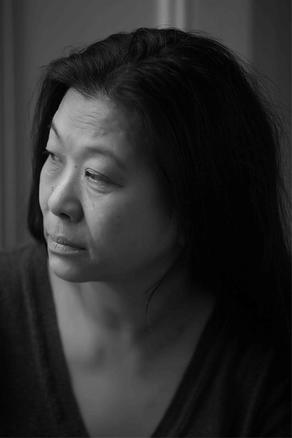 By Christina Schultz In case you missed it, please read Part One of my interview with Lucy Sheen here: "Overcoming the struggles" Now on to the final part of the interview. Christina Schultz: How do you combat stereotypes? Lucy Sheen: By not getting angry - it’s a waste of energy. No matter how civilized the societies, there will always be idiots who are prejudiced for no other reason than the fact that they are. All you can do is counterbalance that with the way you act as a human being and with the work you produce. And the work we produce in the arts has wide ramifications on society. Without culture, innovation, discovery, and without creative minds, society is stunted and stifled. I have to challenge the two-dimensional characters, the Other, the foreigner with an accent selling knock-off DVDs on the street corner, which reinforces stereotypes. We are not allowed to be normal British citizens that happen to be East Asian. So when I perform, I’m making a political point whether I like it or not. I was in an episode of the extremely popular British period drama series Call the Midwife (BBC 2012-; Lucy was in episode #6.3 in 2017). The East Asian character I played, although with an accent, was a well-rounded character, which is the exception to the rule. Her story was fascinating and heart-breaking. I think this is best way is to combat stereotypes: to share stories, showcase voices and offer perspectives that have not yet been seen or heard. And you should have as much integrity as you can in the work you do. CS: What do you think about the idea of “inclusion riders” - there was a big buzz around it during the Oscars this past February - or diversity quotas in the film/theater industry? LS: I’m split. Forcing quotas is always hard but look where we are today. We still do not have an equal playing field. There are all sorts of political, social, racial elements bubbling below the surface acting as serious barriers for artists of color, especially in the U.S. Looking at where America is now, it works like a charm. No one bats an eyelid when seeing a black, an Irish, a Latino person in major roles. In Britain, we are still trying to get the major production companies to start writing and programming different storylines. There’s all this talk of diversity but you need writers who can access this. That’s not to say the white, middle class, Oxbridge male writers can’t do that - some of them can - but many of them can’t because it’s beyond their experience. To change this we have to start nurturing and commissioning British East Asian writers. We need to be given a chance. Producers, casting directors, etc. need to be aware of modern cultural sensitivity issues. Whitewashing roles is just not good enough. And there were natural hurdles with such a small number of drama schools, there were only five back in my day, to get auditions. Now there are so many schools which allow more people to have a chance. CS: What challenges have you faced or negative experiences have you had because you are a woman? Obviously #MeToo and Harvey Weinstein created a global stir. In the UK, I was involved with the Royal Court Theater when they openly addressed the concerns of sexual abuse. That was also hot on the backs of Kevin Spacey and Max Stafford-Clark, a renowned director who co-founded the Joint Stock Theater Company and is also heavily involved with the Royal Court. Working in the 80s was a different world, however. The casting couch was still very much in evidence. There was that awful feeling: Who do you tell? Where do you turn to? I had the added misfortune of being a Chinese woman who at the time was a size 8 [U.S. 6] with long hair. This fed into the Western male dream of the oriental submissive female, which then played a part in my theater work with some people trying to take advantage of me. But acting is still a difficult profession for females to get into and to hold their own. The majority of people in power are still older males. In theater, not even a third of directors are female, which is galling because there are so many talented women out there but the culture is still sexist and abusive. CS: If you could give our readers some advice on how to fight against racism, prejudice, sexism and ageism in the acting business, what would you say to them? LS: None of these things should stop you from doing what you want. You just need to develop loads of patience and diplomacy. It’s also helpful to look for other allies and to be careful about male bashing. You should stay true to yourself, however. Do your research and don’t be afraid of asking for help. Reach out to others who you admire and inspire you. Write to directors or editors. Put yourself on the line. Ask Can I shadow you? See as much as you can, read as many books as you can. Never stop learning and most importantly, don’t be afraid. CS: That’s a lot of great advice. Thanks, Lucy! If you liked what you read and saw, you can follow Lucy Sheen on Facebook, Instagram and check her website for updates!
Facebook: www.facebook.com/ActorLucySheen/ Instagram: @lucysheen Website: lucysheen.com Overcoming the struggles: a dyslexic, transracial adoptee carves space for British East Asian actors in the UK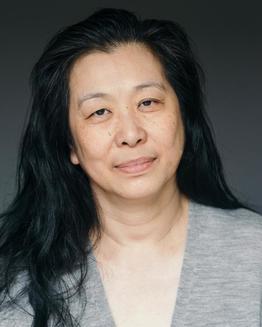 (photo: lucysheen.com) (photo: lucysheen.com) Interview conducted by Christina Schultz Lucy Sheen was made in Hong Kong, exported to the UK in the late 50s early 60s as a transracial adoptee. Lucy is an actor, writer, filmmaker, trainer and transracial adoptee advocate. She trained at the Rose Bruford College of Speech and Drama (1985), the first British East Asian actress to graduate from a recognized UK drama school. Lucy’s first professional job was the female lead in the groundbreaking British feature film Ping Pong, directed by Po Ch’ih Leong. This was the first British film of its kind to look at the issues facing the British-Chinese community in the UK. Christina Schultz: Hi, Lucy. Thanks for chatting with Femfilmfans. I want to start by saying I am in awe of all the work you do. You are a filmmaker, actor, writer, poet, cultural sensitivity trainer, advocate, the list goes on. How do you find time to do everything? Lucy Sheen: The nature of being an actor is that if you’re not Dame Judy Dench, you need a day job. If you don’t have some Hollywood films on the backburner, you need to fit in the teaching, the training, the writing, the acting, etc. Lots of the work you can do remotely, like writing, for instance, which makes it easier. CS: What do you enjoy doing the most? LS: Acting, I suppose. But I enjoy all of it. The corporate training day job not so much although I do appreciate it. I get to use my acting skills in a different setting and I get paid for it, which is always great. Acting on stage is so different from other types because it’s in front of a live audience with other actors - all living, breathing entities. The challenge is to keep it fresh and exciting for the audience and for you as an artist if you have multiple performances.
CS: What made you transition from acting to filmmaking? LS: I got hoodwinked into it [laughs]. I was approached by an acquaintance who found out I was an actor and suggested I make a documentary film. I pointed out my work was all in front of the camera and not behind the camera so I said I could help her, but somehow I wound up producing, directing and writing the documentary Abandoned Adopted Here. CS: But Abandoned Adopted Here also tells your story, that of the transracial adoptees. Is that why you agreed to make the film? LS: Yes, I felt it was important to make a documentary about what it means to grow up as a transracial adoptee and what it means to be British East Asian. CS: Was it difficult making a film about such a personal topic? What was that like for you emotionally? LS: It would have been harder had I not been directing and writing. I would have more time to stew in my own juices. I didn’t give myself time to think about the personal nature of the project. It wasn’t until I observed other people watching the film that I realized how emotional they found it. CS: If I may say so, your personal story seems to be one of struggle. Struggling to find quality work, to navigate the completed waters of identity, esp. in the British colonial context, as a “transracial adoptee,” struggling for the rights and representations of Asians in film and theater, struggling with dyslexia and so on. What injustices and limitations have you faced in your line of work? LS: As I’ve gotten older I’ve become less tolerant of inequality and injustice. When you first come out of drama school you want to work. You can end up compromising yourself and you have youth as an excuse. I was lucky, however. When I left drama school in the 80s, I was a “jobbing actor,” although there were limitations. I got radio work because they wanted a Chinese person but since I grew up in the UK I had to put on an East Asian accent. And yet I couldn’t be in radio for anything other than those Chinese roles, which is quite bizarre and still happens now. In England, East Asians are viewed separately from other British minority ethnics, such as Black, African, Caribbean and Southeast Asian. We have always been further segregated and seen very much as the Other, the thing to be feared, to be ridiculed; you find it in the practice of yellowface. If you were to continue the racist practices of black- or brownface, you wouldn’t get away with it in the UK, but for some strange reason this continues to happen to East Asians. So we are, in many ways, so far behind and it confines what I can do as a performer CS: And what was it like dealing with your dyslexia?
LS: I didn’t know I was dyslexic until I did all of my studies. It wasn’t a recognized condition when I was a kid in the 50s-60s. They thought that I was being thick and insubordinate. This kind of reaction hasn’t changed much over time, even with more awareness of learning disabilities, but you do find ways of coping. Dealing with text and words as an actor is still probably not the best profession to go into when you’re dyslexic. I had to learn to train my eyes to slow down and my brain to focus. I’m not very good at sight readings. In a student production of King Lear, for the line “Put on what weary negligence you please,” I once famously said “put on what weary negligees you please” instead. These kinds of things were embarrassing at the time but are now quite amusing. Because of my experiences I work with dyslexic charities and offer advice. I tell people you can succeed in world of words and literature. Today there is so much technology that makes things easier. It still takes me twice as long to read a script though. Join us again on Saturday for Part Two of Christina's interview with Lucy Sheen where she talks about combatting stereotypes, experiencing the #MeToo movement and promoting diversity in the UK! Interview conducted by Marina Brafa 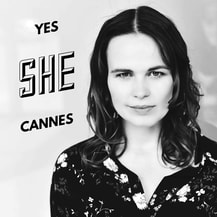 Natalie attented the 2018 Cannes Film Festval (Photo: Natalie MacMahon) Natalie attented the 2018 Cannes Film Festval (Photo: Natalie MacMahon) Natalie MacMahon is a Berlin-based actress, director, writer, translator, interpreter, voice over artist and presenter. Currently, she is working on the script of her first feature film Hot Scary Summer and on her Esperanto web series Malsano Nomata Amo (A Disease Called Loved) and organizing the Female Filmmakers Festival Berlin. - Submissions to the festival are being accepted until October! - Read Part One of the interview here. Natalie tells us about being a director in a male-dominated industry, her experiences at the Cannes film festival and how important it was to find her own way of working. 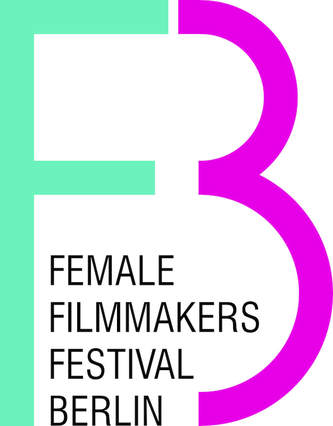 Marina Brafa: Last year you and your crew, all women working in film, founded the Female Filmmakers Festival Berlin. Where did this idea come from? Natalie MacMahon: There are a few festivals for female filmmakers, especially in the U.S. But I noticed many times that I did not want to submit my films to these festivals because the description of the festival - why they do what they do and what the festival is about - was too extreme. MB: In which sense? NM: A lot of them send out a very clear feminist message. I think it is possible to showcase female directors without excluding or being against anyone else. I can say that I personally did not identify with their message and did not think my films would fit. Therefore, I wanted to create an alternative festival, a platform for female directors whose films do not have to be about a certain theme. MB: But you still screen films made by women only? NM: We show films where the most important roles are filled by women and where the team is mostly female. We could have a film with a male director with a mostly-female cast with female themes. That’s what I wanted: to be more open and to create a place to connect with each other. MB: Berlin has a festival called the “Berlin Feminist Film Week.” What is the difference between your festival and this one? NM: We are not their competitor because we are not a feminist festival. As I said, we want to give women a platform, support new talents and show international productions. In addition, we present films from countries with underrepresented film markets. We also want to include workshops and panels in our festival about topics that are unclear to many filmmakers, for example financing. A topic many people do not want to hear about, especially creative types [laughs]. In that sense, it is less a cultural event but a platform by filmmakers for other filmmakers based on our own experience. MB: On the Female Filmmakers Festival’s website you state that the focus will be on Ireland and Spain. How will this be reflected in the festival’s program? NM: We will have special screenings with films from Spain and Ireland and feature music from these countries. In two years, Italy will be one of our featured countries, partly because we are already working with an established Italian music festival, the Siren Festival. This year they are including film on their program for the first time so we added a Music Video category to our festival. MB: How many submissions did you receive so far? NM: As of right now, we have received around 450 submissions including short and feature films and music videos from all parts of the world. And we are still accepting submissions until October! We added a pre-event in February, which will take place during the Berlinale, because we have so many good submissions and we want to give people the chance to connect before the actual festival in June. MB: The pre-event in February 2019 will be during the Berlinale but is not directly associated with it? NM: Correct. The pre-event is not connected to the Berlinale but takes place at the same time just to make people aware of our new Female Filmmakers Festival. At the pre-event, we will show some short films, the audience will get to vote for the best one and this short film is going to open our festival in June. MB: That’s a good marketing idea! NM: Yes, but we also have good films and people like to connect! It’s a chance to test the waters. MB: Do you think that it helps holding the FFF in Berlin? NM: Yes, Berlin attracts creative people from all over the world. People here love culture and make time to attend events. There are film festivals about pretty much everything in Berlin. I still think in a way there are never enough! MB: Do you have any advice for women who want to organize a film festival or are in the film business in general? NM: Don’t overthink, just do something. If you have an idea, if you have a script, you should just find a way to do it, for example as a short film. Learn more step by step and develop your own voice. MB: So, “Just do it”? NB: [laughs] Yeah, easier said than done! MB: Many many thanks Natalie for your time! You want to know more about Natalie's film projects? Check out her Website and follow her on Facebook! Also, find more info about the Female Filmmakers Festival Berlin here - submissions are open until October! 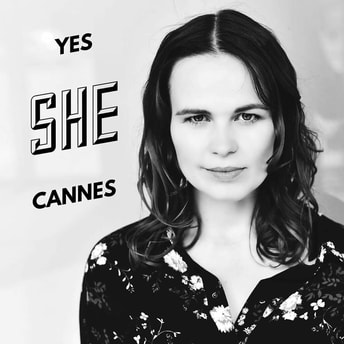 Natalie supports the recent empowerment of female filmmakers and actors at Cannes Film Festival (photo: Natalie MacMahon) Natalie supports the recent empowerment of female filmmakers and actors at Cannes Film Festival (photo: Natalie MacMahon) Interview conducted by Marina Brafa Natalie MacMahon is a Berlin-based actress, director, writer, translator, interpreter, voice over artist and presenter. Currently, she is working on the script of her first feature film Hot Scary Summer and on her Esperanto web series Malsano Nomata Amo (A Disease Called Loved) and organizing the Female Filmmakers Festival Berlin. Read Part Two of the interview here, where Natalie speaks about founding a film festival in Berlin and her work as a female filmmaker. Marina Brafa: Hi Natalie. You attended the film festival in Cannes this year. How was your stay there? Natalie MacMahon: Cannes was really interesting this time! It was my third visit and every year I have different agendas. This year I wanted to promote my Female Filmmakers Festival Berlin (FFFB), look for funding and meet filmmakers. I noticed people had already heard about the festival even though we haven’t promoted it yet because it will take place in June 2019, so we still have plenty of time. We will, however, have a pre-event in February 2019 and screen the short films sent to us as part of our “Cannes special.” The best one will then open the festival in June! I was also at Cannes to promote my short films. Some of which have been shown at other festivals and I am currently looking for distribution for my latest one. 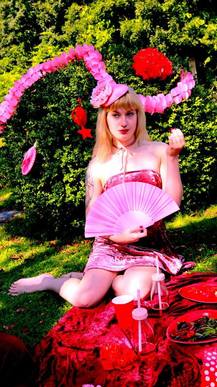 Film still of "The Readhead" (Still: Natalie MacMahon) Film still of "The Readhead" (Still: Natalie MacMahon) MB: You are talking about your film The Redhead? NM: Yes. Another thing I did in Cannes was to get some ideas and raise funds for my first feature film. I am writing the script for it now but it is not finished yet. I was also scouting locations because I do not know where I am going to shoot the film. MB: Do you already have any concrete themes or a name for your first feature film? NM: The name of the film is Hot Scary Summer for now, and it is probably going to be in English, maybe in German. The film is set in the future, however, this is not emphasized aesthetically but rather narratively. It is about a couple that goes on a virtual reality honeymoon by visiting a studio and putting on AR glasses. Their brains then get scanned for triggers of emotions and experiences and with all this information the studio creates the perfect setting. In their case, the beach. But during the virtual trip something goes wrong and only the husband wakes up and the wife is in a coma-like state. Her mind is stuck in a different virtual reality and everything gets out of control from there. MB: You started with short films, now you are going to shoot a feature film. Why the switch? NM: I do like short films a lot because you can test out ideas and develop your skills. They also don’t require a lot of funding and are easier to make. I learned so much about the filmmaking process. For example, before I made my first short film I didn’t know how to edit, how to make a storyboard or how to direct people. It was really good to try out everything because when I make a film now, I can appreciate the people I work with more. Having a better understanding of all the processes makes it easier to work together and to explain what you want! MB: Besides your new film project Hot Scary Summer, what’s next? NM: For the fall I am planning an interactive web series based on my short film A Universal Love Story, which is partly in Esperanto. It was well received by the Esperanto community and has been shown at many festivals, so I decided to make the web series 50% in Esperanto and 50% in English. MB: Where will it be released? NM: I will probably just release it on Vimeo or Youtube. Usually I am not allowed to make my work available online because of the film festivals but the nice thing about a web series is that it can be online and at the same time I can send it to festivals so everyone has the opportunity to see it. MB: You work in many different fields of film: as a director, a screenwriter and an actor. How have you been treated, especially as a woman, in these different roles? NM: I remember when I went to Cannes for the first time three years ago with my short film. I had to decide if I would go to the festival as an actress, or director, or both – what should I tell people? I had to focus on one aspect, at least for the festivals, and I went as director instead of actress. It really was a different experience. There was less competition among directors, they were more supportive! As a woman it gets easier when you get older. But I guess I’m not that old yet, I just turned 31… MB: So belated congrats! NM: ...well it was in April but it feels like yesterday [laughs]. So it is not that old but it feels different compared to five or six years ago. I think it is definitely true that if you are a young woman other filmmakers tend to think you are naive and do not take you seriously, especially as a director. If you have to direct older, experienced actors, it is difficult until they work with you and notice that you are professional and well-prepared. MB: How does this look in your everyday work as director? NM: I am always open to other people’s ideas and suggestions but especially on shooting day somebody needs to be the boss and say: “That’s what we are going to do.” You have to be confident and trust yourself because you know what you are doing! When I tried to listen to everyone and make them all happy it was a mess. When you clearly tell people what you want, it works. MB: This year the jury in Cannes was mostly female and there was a movement called “5050 by 2020,” similar to “Time’s Up” in Hollywood. Were you aware of this during your stay? NM: Yes! When we got the festival bag there was a flyer with a hotline you could call if you felt like someone was approaching you in a weird way. I think that’s the first time they offered it. I do not know if anyone called it but I think it is a good idea. I never had bad experiences myself but I heard from other women who did, especially at Cannes. I also noticed a change in the panels and talks I attended. The speakers were mixed 50/50; not only men were giving talks. MB: Do you think we have an equivalent movement here in Germany? A German version of 5050 by 2020? NM: Yes. It never became that big but many things are happening, especially in Berlin. There are so many talks and events to support women. When it comes to funding there are also opportunities which are female-only. Many still do not know about the funding schemes that are out there. I think an important next step is to raise awareness of this in the film world. You want to know more about Natalie's film projects? Check out her Website and follow her on Facebook ! Get a taste of Natalie's short films by watching the trailers: The Readhead A Universal Love Story Like a Summer Sonata Two of her films are available on realeyz: The Man Who Coudln’t Cry Like a Summer Sonata The Bloom Is On The RoseInterview conducted by Christina Schultz 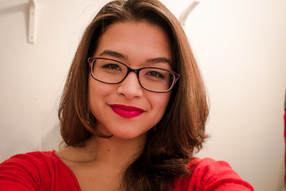 (photo: courtesy of Annie Amaya) (photo: courtesy of Annie Amaya) Annie Amaya is a young animator and filmmaker from Canada currently studying VFX in London. Her latest film, Why Do Flowers Die?, is being screened at the Future of Film Showcase (FOFS) today - May 14! Christina Schultz: Hi, Annie! Thank you for taking the time to speak with us. I’d like to start out by having you tell us about how you became interested in film and animation. Annie Amaya: Prior to my undergraduate studies at Concordia University in Montreal, I didn’t do much animation but I was always interested in visual arts. I was known as the artist in elementary school. In Grade 8 we had a school trip to a career center and I didn’t know what I wanted to do, but I remember asking for information about becoming an animator. It wasn’t really a plan but it’s funny to think I was already thinking down that path. I’m currently studying VFX and not 2D animation, but it’s still related and I’m just seeing where it goes from there. CS: When did you realize animation was what you wanted to pursue? AA: After high school, I was very indecisive about what I wanted to study because I’m also into music. I chose animation because it is an art form that combines the visual with music and sound components. Animation appeals to me because it’s very broad. CS: Do you write the music for your films? AA: For one of my short films, Grow, I did write the music. I have a music background and even if I don’t score the music for my films it certainly helps me pick music for them. CS: When did you start making your own animated films? AA: It was part of the program at school to make short films but animation is something that I’ve always loved. I used to watch the behind the scenes footage from all the DVDs of Pixar films and I wanted to be one of those people. CS: I think you’re a talented artist and illustrator. How did you develop your skills? AA: Well thank you! I always liked drawing and the arts but I didn’t know exactly how to animate before starting my university program. I had some visual arts skills but I really only went into animation after starting the program and learned my way around it at school. CS: Do you plan on making any live action films? Or have you made any? AA: Well, VFX is somewhere in between because it is CG integrated with live action. And that’s what I’m planning to do as a career but I’ve always loved 2D animation so I plan on doing that as my own personal side project. I think it’s better that way because I can make my own films and not cater to the commercial industry. CS: You are from Montreal, Canada and now study in London. Do you notice any differences between the film cultures in the different places in which you live and work? AA: It’s funny because a lot of the big studios in London also have studios in Montreal. So they work on the same films, just in different places. The film cultures in the two cities are definitely connected. CS: The story for your film Why Do Flowers Die? was inspired by your family and your mother’s struggle with cancer. The main character Rose is based on your sister who was in and out of hospitals at such a young age. Was it hard for you to make the film because of this? 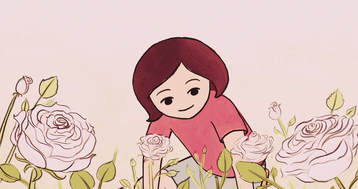 (photo: still from "Why Do Flowers Die?" courtesy of Annie Amaya) (photo: still from "Why Do Flowers Die?" courtesy of Annie Amaya) AA: I think for Why Do Flowers Die? it wasn’t hard. The short film Grow, which I made prior to Flowers, was really based on my mom’s struggles because I was making the film while going through that experience. By the time I made Why Do Flowers Die? she was fully recovered. It was more of a reflective piece so I wouldn’t say it was difficult but it was definitely personal and whenever I have to talk about my film I have to explain the context. The point of me making the film was to express those ideas and themes. Rose is inspired by my younger sister who was going through this when she was 10 years old and it really affected me. We have more of a mother-daughter relationship than a sister relationship. Seeing her go through the experience was a big inspiration for the film. I wanted to show how a would child see these things. CS: It couldn’t have been easy, but I’m glad to hear your mother recovered! AA: She’s obviously not the same because she underwent a major surgery but the cancer is gone. It is a miracle really so we’re grateful for that. I always have to give a disclaimer before I show the film: mom is ok, so don’t worry! [laughs] CS: Your film Why Do Flowers Die?, which has won an award from Toronto Youth Shorts, is now being shown at the Future of Film Showcase (FOFS) this coming Monday. Tell us about what it’s like to have your film shown at festivals and your interactions with the audience. AA: I unfortunately can’t attend the FOFS in Toronto because I’m London for school. But it’s a nice to know people are seeing my film. Since most of my films are very personal, whenever I see them shown on the big screen I think Oh my God, people are peering into my soul. But it’s also a nice feeling because I have people coming up to me afterwards saying I get what you’re saying. Everything you said in your film I totally understand. It’s nice to connect with people on such a deep, personal level. It’s very rewarding. I have no negative experiences, it’s all been positive. CS: That’s great to hear. And might I add, best of luck to you at the festival competition. AA: Thanks! But I usually don’t worry so much about the competition part. If I get an award it’s nice but that’s not a big deal for me. CS: That’s a good approach, I think. Now for a Femfilmfan question: If you were to pick a woman in film or a woman in the media who inspires you or who has influenced you and your work, who would it be and why? AA: The first person I can think of would be Ava DuVernay. I love love love her films and I wish I could make films that are so important and so culturally relevant like she does. She makes films about people of color and raises awareness for issues going on today. I think that’s very inspiring and very important. CS: Yes, definitely. Now for a hard question: what’s your favorite film? AA: [laughs] I don’t think I can pick. But if we can narrow it down to animation, my current favorite is Song of the Sea by the Irish cartoon studio Cartoon Saloon. Aesthetically and narratively it’s the kind of style that I like. They also made a new film called Breadwinner. Angelina Jolie is the executive producer. It was a mind blowing and culturally relevant film. I appreciate that a lot because it shows how girls in Afghanistan live and the issues they face. So that’s also at the top of my list. I really like Cartoon Saloon’s films a lot. CS: What’s up next for Annie Amaya? What can we expect from you in the coming months and years? AA: I’m busy with my Master’s right now so I’m not able to make new short films. However, I did work on a short film called Tapping Tango before I started. I was the animator for that project and the writer took on the role of the director. It’s going around festivals right now. As for the future, I have to find a job first [laughs] and then I can start thinking about personal projects. CS: Well I wish you lots of luck and it sounds like you have a promising future ahead of you. AA: Thanks! Why Do Flowers Die? is now available on Vimeo. Click here to watch the short film. Check out Annie's portfolio here. You can also follow her on Twitter, Instagram and Facebook. And if you're in the Toronto area today, get your tickets for the Future of Film Showcase so you can see Annie's film on the big screen! (L, C: stills from Why Do Flowers Die? courtesy of Annie Amaya; R: Future of Film Showcase, click image to be redirected to their site)
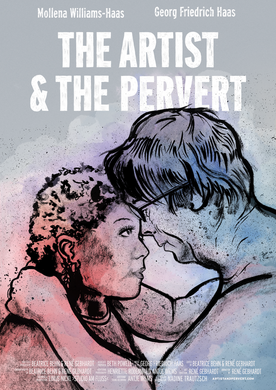 (photo: www.artistandpervert.com/press) (photo: www.artistandpervert.com/press) EN: The interview with Beatrice Behn was conducted by our editor Christina Schultz in German. Christina then translated the interview into English. You can read the original German version here. DE: Das Interview mit Beatrice Behn wurde von unserer Chefredakteurin Christina Schultz auf Deutsch geführt. Christina selbst übersetzte das Interview auf Englisch. Du kannst die originale deutsche Version hier lesen. If you missed it yesterday, please read Part One of our interview with Beatrice Behn! Christina Schultz: So what led you to make the film The Artist & The Pervert? Beatrice Behn: René Gebhardt and I stumbled upon this story about two years ago because of an article in the The New York Times [featuring Georg Haas and Mollena Williams-Haas]. I thought it was exciting because everyone, including myself, had a kind of ad hoc reaction. They immediately wanted to give their opinion about it. That triggered so much! We wrote to Georg and Mollena and they said sure, come on over, let’s make a film - and we made it right away. Since it all happened to fast, we never had the time or really even cared to think about why we’re making this film. We just made it. Period. Nobody does it like that, but we did. CS: How did the public react to the film? BB: Now we have the first screenings behind us and we were surprised because we thought the audience would leave the theater and think oh my God, these perverts! I’m going! I don’t want to see these people naked! They’re old and fat for God’s sake! But the exact opposite happened. Everyone stayed in their seats. The more the film was screened, the more people came to the theaters. The Q&As afterwards were unbelievably long and there were so many questions. We were blown away by this because we, funnily enough, thought that the film would not be received so well. We were not prepared for the film to be received so positively. We are still trying to wrap our heads around it [laughs]. CS: It’s interesting that the film was made so spontaneously. I read that it was financed by crowdfunding. Is that right? BB: Yes and no. We filmed it without a budget. We already had cameras and when we went to see them we paid for everything out of pocket. When we went broke we had fortunately finished filming. We just had to take care of the postproduction. The good thing is that René and I have enough knowledge that we could do just about everything but the sound design. We needed money for the sound designer and we did it with crowdfunding. CS: Kudos to you! The couple, Austrian composer Georg Friedrich Haas and his wife who voluntarily serves him as a slave, the writer and sex educator Mollena Williams-Haas, is pretty unique but also full of contradictions. There is no commentary in the film so that their relationships is shown as authentically as possible. But who are they really? BB: I think there are two levels. The one as a real life couple and the other as a symbol. And that’s what the film is about because after they outed themselves in The New York Times, most people reacted to Georg and Mollena as a symbol for something. For some it was a symbol for total freedom, for others a symbol for absolute perversion. The symbolic level is bigger so we made this film to find out who the real people are behind the symbolism. A 24/7 BDSM relationship sounded totally exhausting to me. But we wanted to find out how it works and why they do it. How can it be that they both consider themselves feminists and are in a power exchange relationship where the woman is submissive? Where they play out a 1950s household story? That’s very hard to capture. And naturally the whole question of race as well. How can a white man from a Nazi family dominate a black woman? Why does she allow this? Those are the big questions hanging over them and that we are trying to answer on a personal level. CS: What do you like about them? BB: There are things they do that I find really great. It’s so radical that they live the way they want at their age - Georg is 65 and Mollena is in her 40s. That personally touched me and got me thinking. And the audience too. They have no choice but to think am I really living my life the way I want? That’s very exciting. There are also aspects that I personally find problematic like the time aspect. She gives up almost all of her time to serve him and that helps him in his daily life and with his art. He can produce so much more than before. But she is also an artist and produces art. They even make art together but she gives up so much time for him. But just because I don’t like it doesn’t mean that I have to judge the two of them. It’s their life and not mine. That’s the most difficult and most exciting part about the film. CS: What do you think about the accusations that the couple is putting on an act? BB: I find it super fascinating that Georg has been accused of using it as a PR strategy. But he is so renowned and well-known that he doesn’t need it. If his music was total shit and no one knew him, OK. But he was already established beforehand. I think it’s simply an attempt to deny that two people fulfill themselves in such a radical way. It’s easier to believe that it’s a PR strategy than believing the two of them are serious. And I think that’s really funny. CS: You mentioned feminism and racism. How does a feminist behave, in your opinion? How does feminism, sexism or racism play a role in the film and in their relationship? BB: To the first question: what is feminism? That is a personal question. There isn’t one kind of feminism. There are thousands of kinds. For me, feminism is the wish for equality between all possible genders (I believe there are more than two) and that one has all opportunities open to them to live their life the way they want to, regardless of their gender. It’s not against men. It simply means that we want equality. I believe Georg and Mollena would answer this question in a similar way. And if you think about it, you realize there isn’t a big discrepancy between how they live and feminism. Because the whole point of feminism is that one should realize themselves the way they damn well please, regardless of gender or even race. And then everything makes sense. If you reduce feminism to such a narrow pop culture idea that only women can demand equal rights and that they have to be strong and can’t be submissive, then you realize that there is a discrepancy. But to me that’s more a sign that one hasn’t thought out their feminism and not a sign that the two of them are lying to one another. CS: And with sexism and racism? BB: This racism, this sexism, this perceived anti-feminism are all in the film but not where most people think they will find them. Instead - and I think this is the most interesting part - these things are all found in the individual prejudices that one holds as members of the audience. And they are somehow confronted with their prejudices, that’s one of things the film does, just by seeing the way these two live out their daily lives. That’s the source of friction the film creates. I think that’s why people have so many questions after seeing the film. And that’s awesome. CS: It is. I definitely want to see the film! My last question to you is: what would you say to girls or women who are interested in a film career? Do you have any tips or encouraging words for them? BB: Part of me wants to say, don’t do it. Part of me really wants to be protective and say that it’s very exhausting and annoying because you have to fight against so many things. And if you deal with feminism and film like I do, you are very quickly put into a niche and that’s a struggle. The other part of me wants to say, yes absolutely. We need more women, we need more voices, we need more diversity, especially in film criticism which is dominated by young, white, middle-class men. We also need other kinds of people so we can have different perspectives in the current discourse. And I believe - except for saying that you should realize that it won’t be easy to establish yourself, especially as a woman - I can’t really give any other advice. CS: It certainly can be a struggle as a woman, whatever field you’re in. Thank you for speaking with us and thank you most sincerely for your wise words. The Artist & The Pervert is on tour. Check for screenings near you here: http://artistandpervert.com/ Be sure to sign up for the newsletter for updates! |

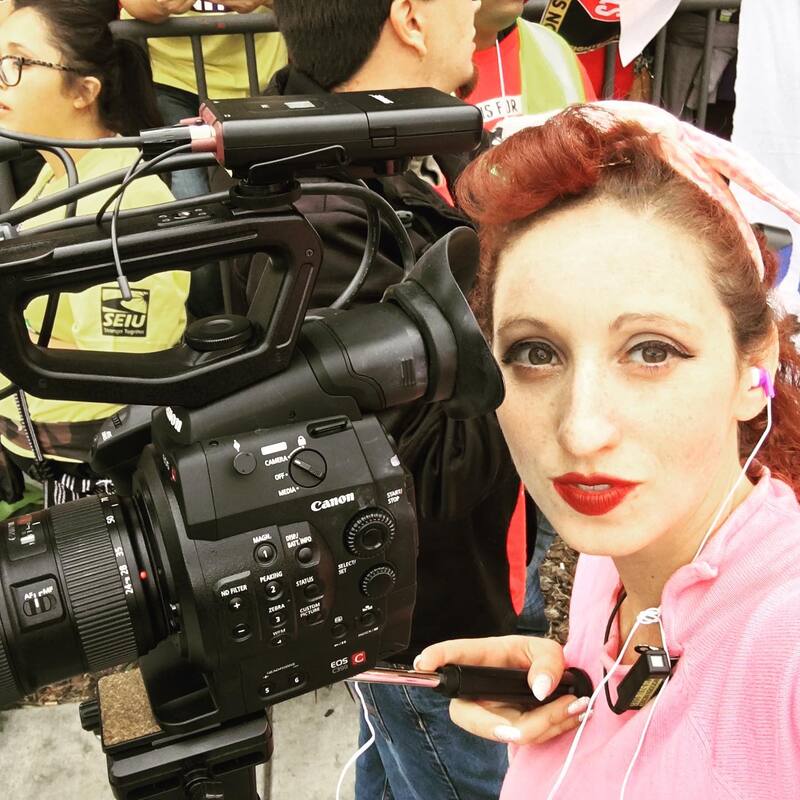
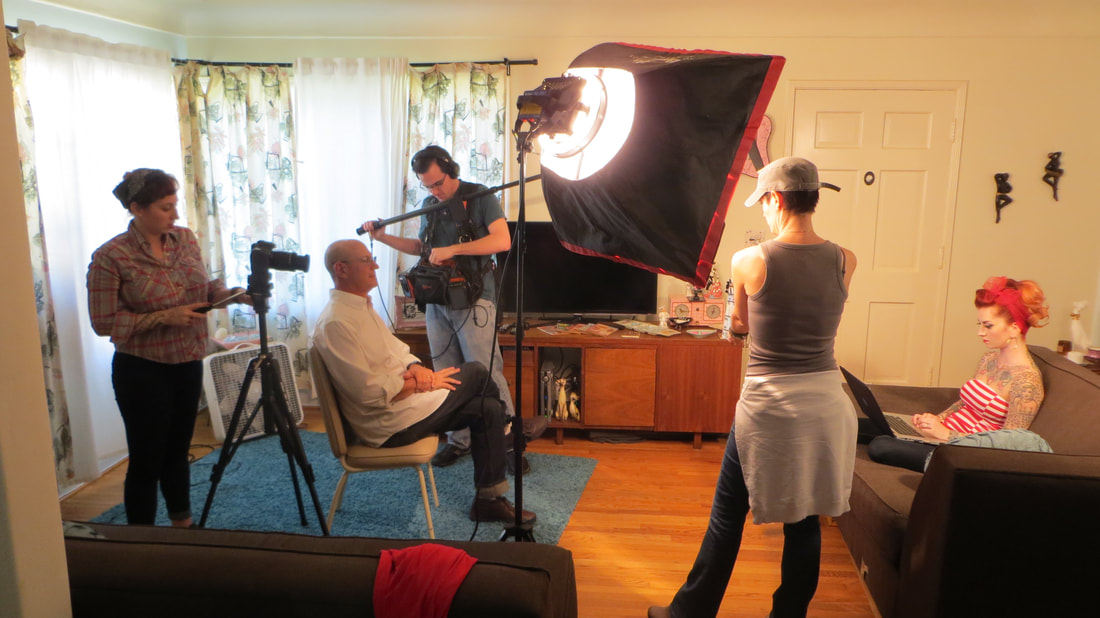
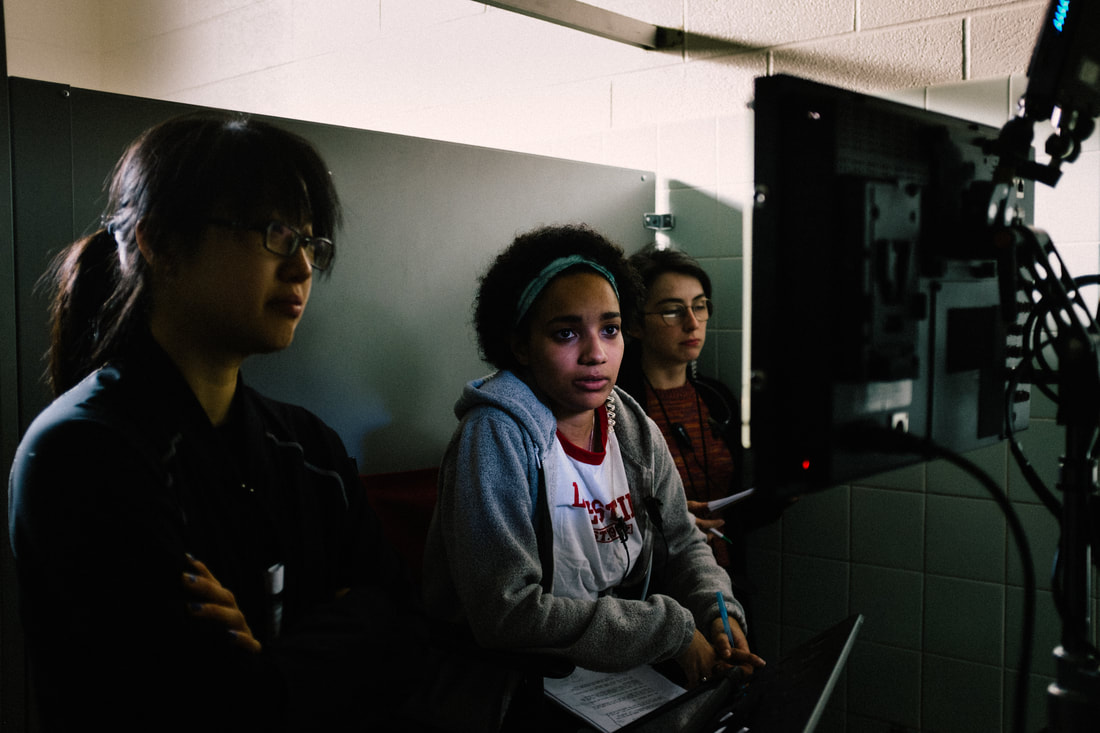
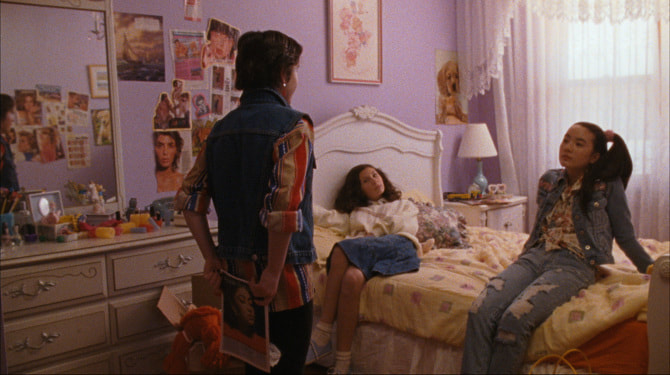
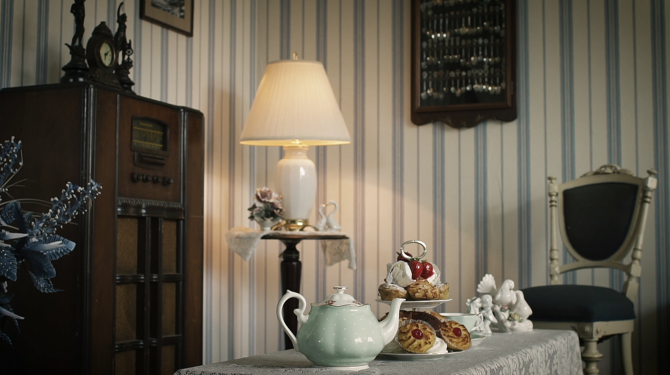
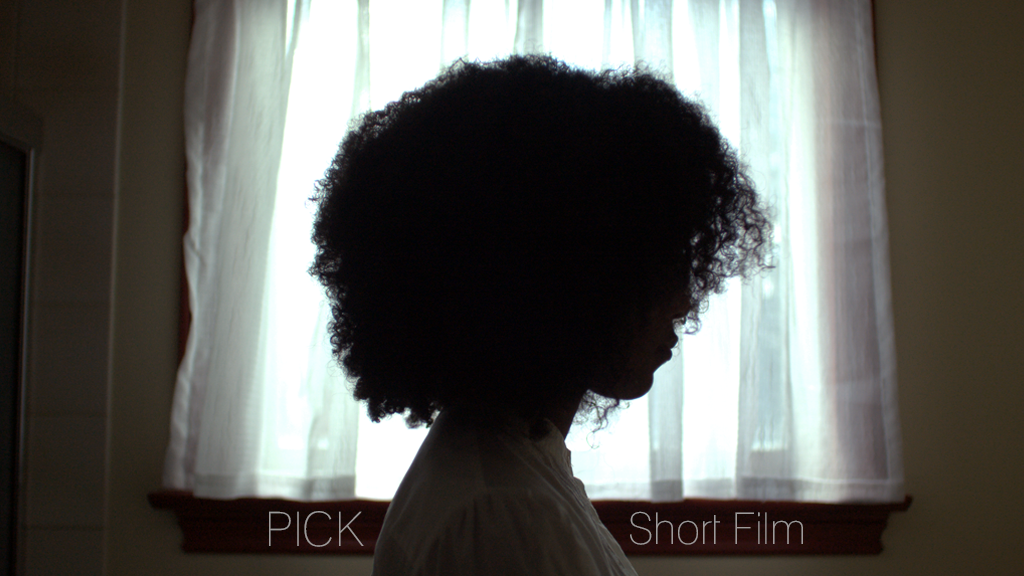
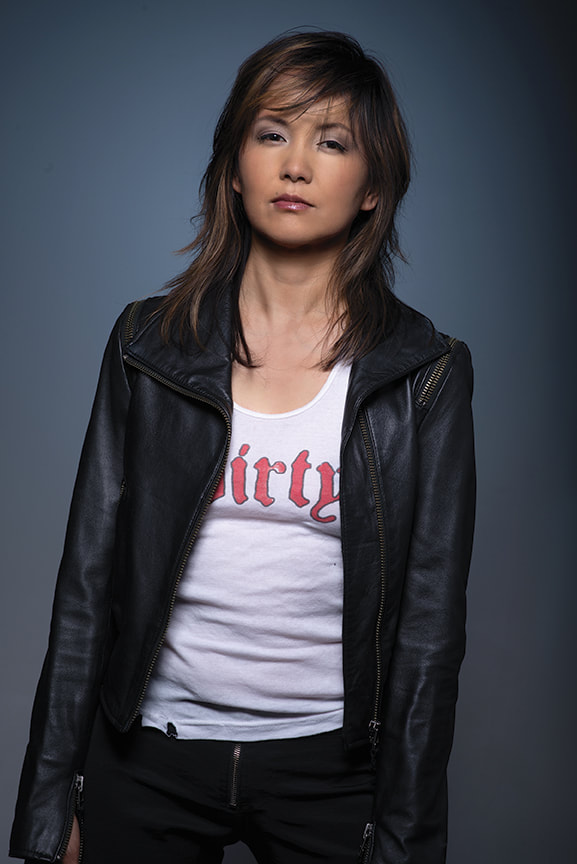
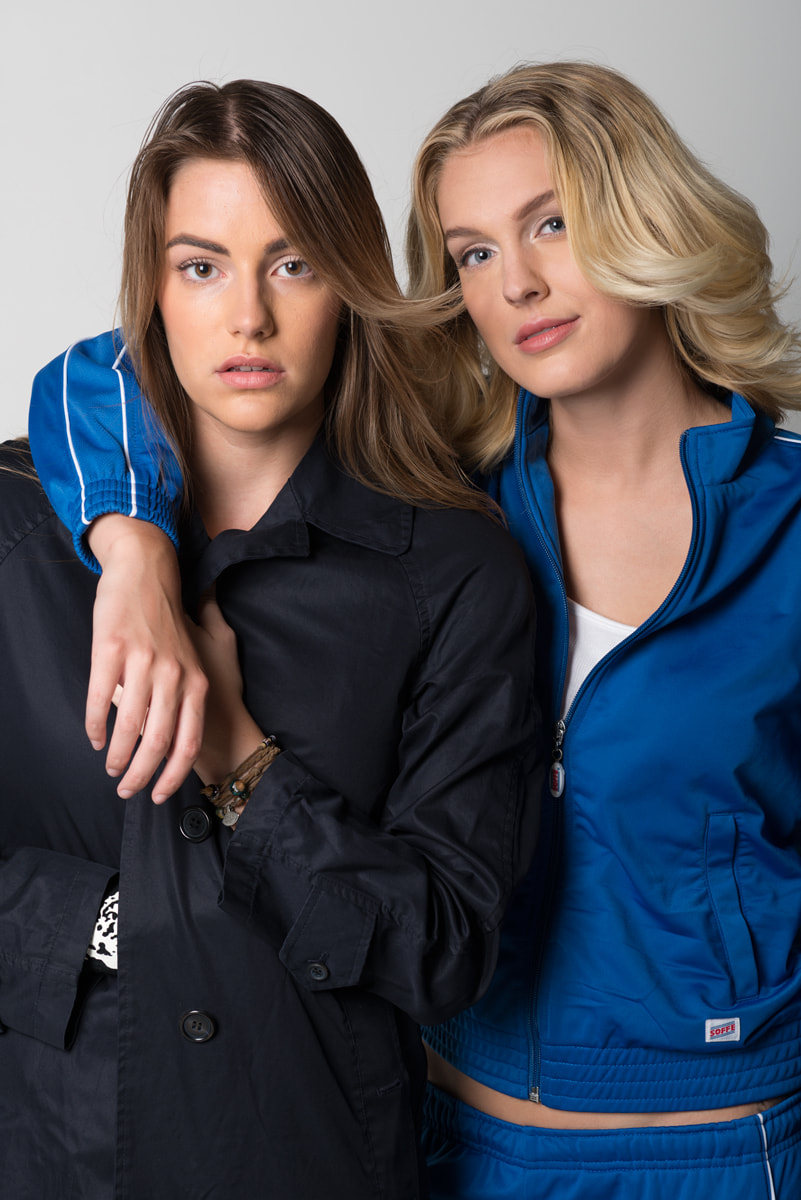
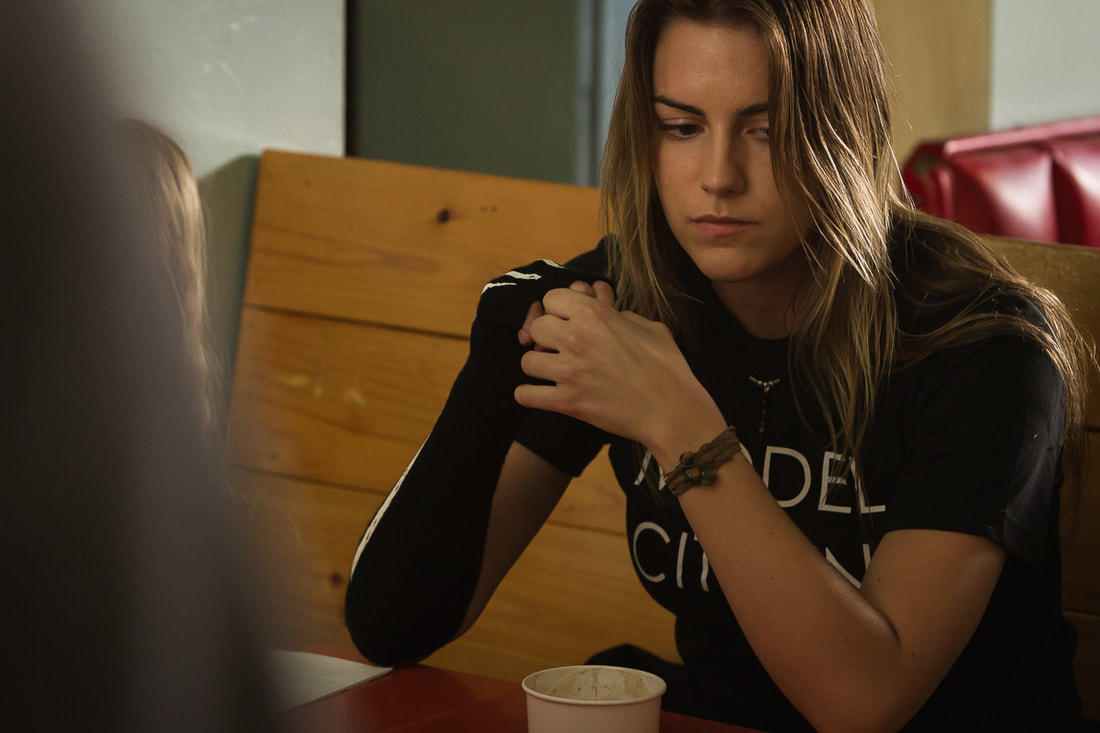
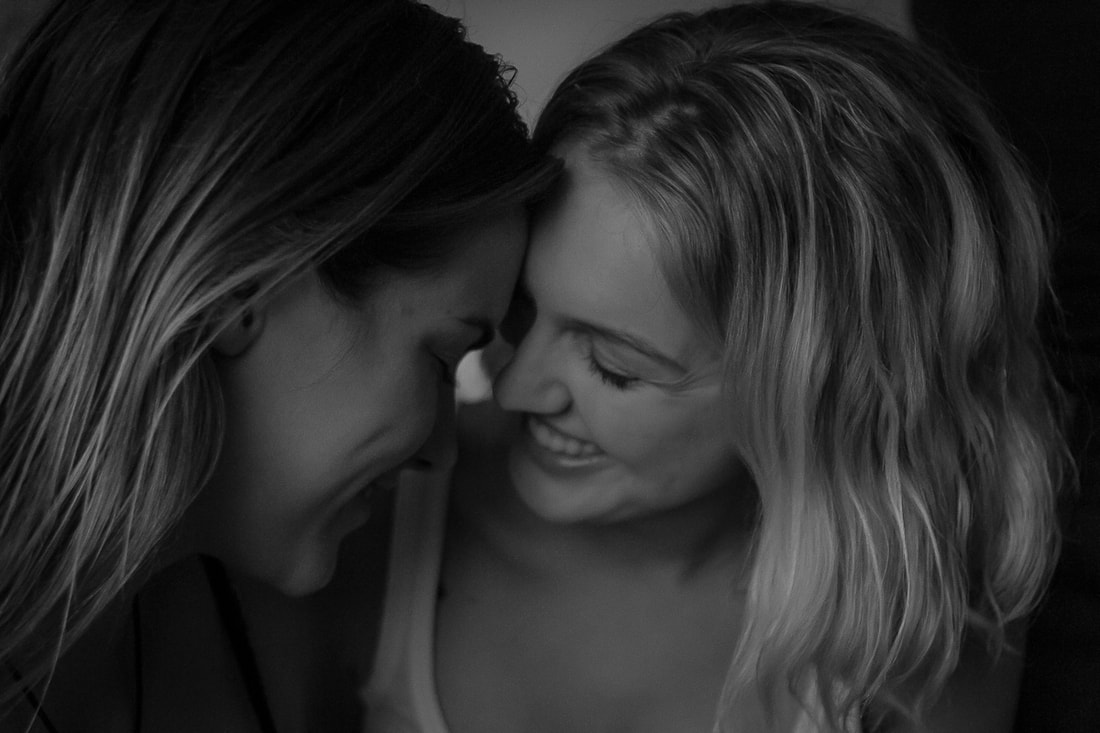
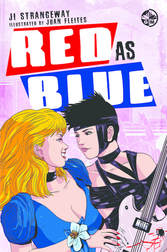
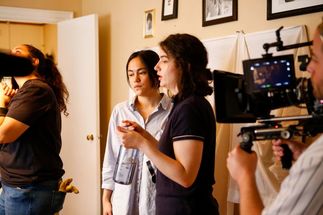
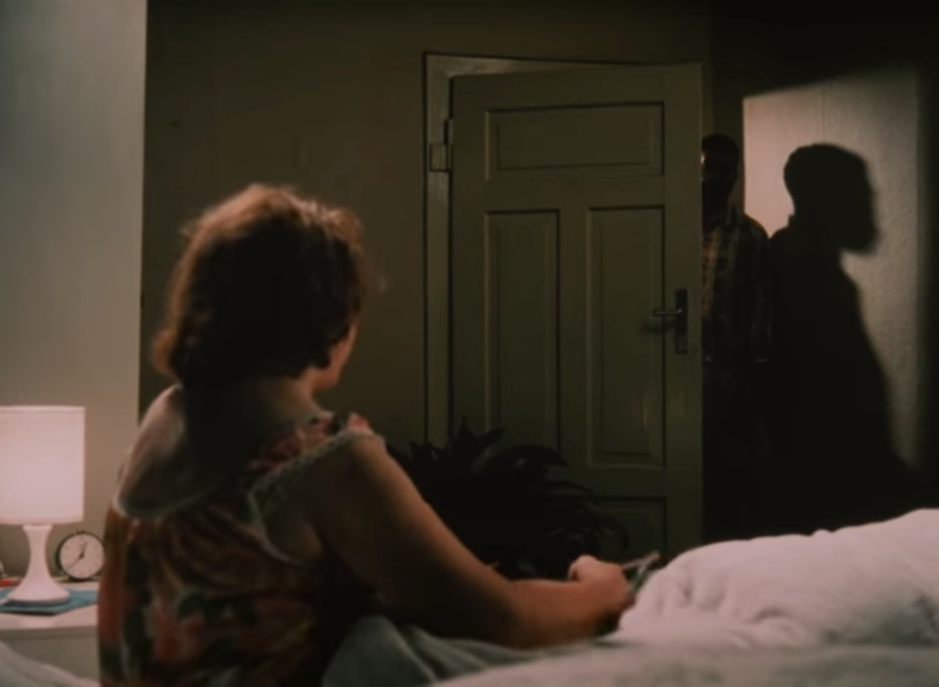
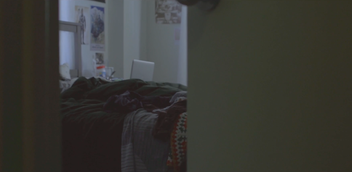
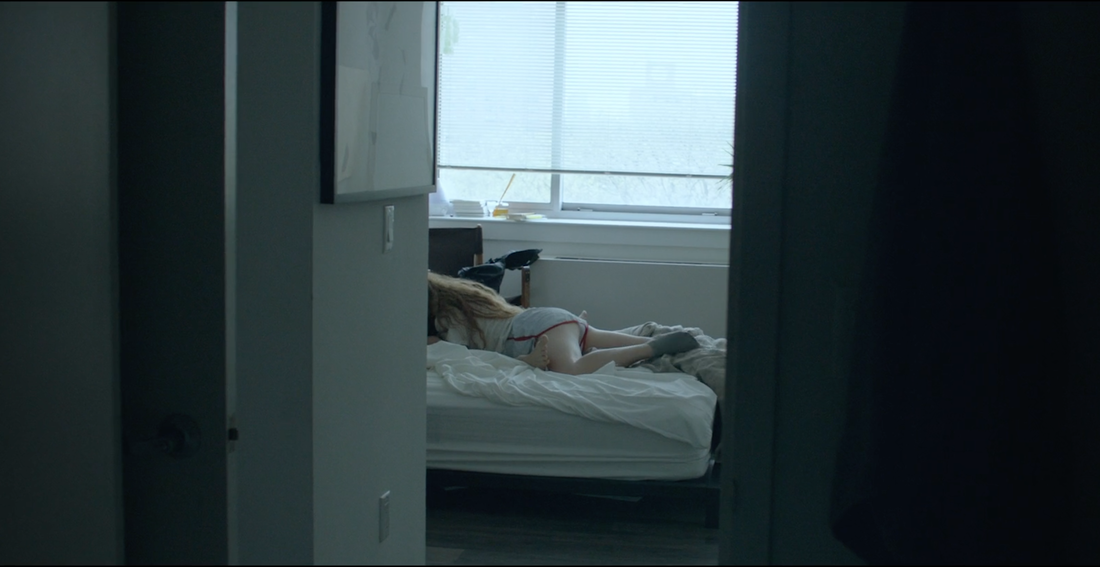
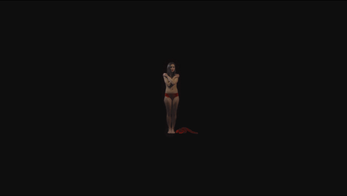
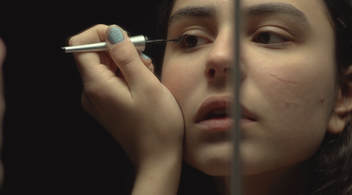
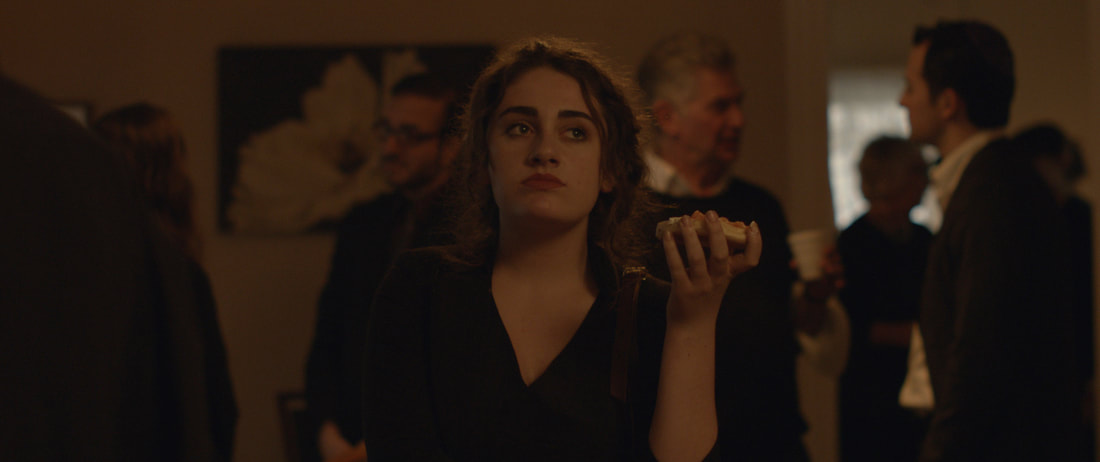
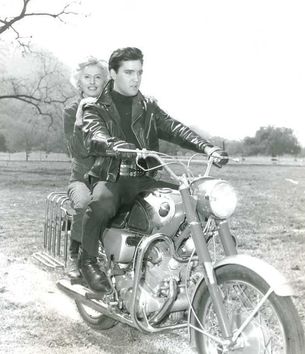
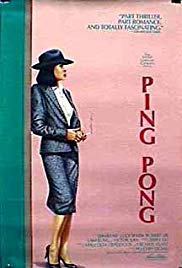
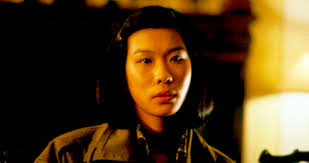
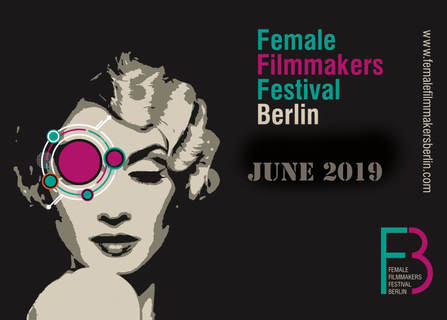
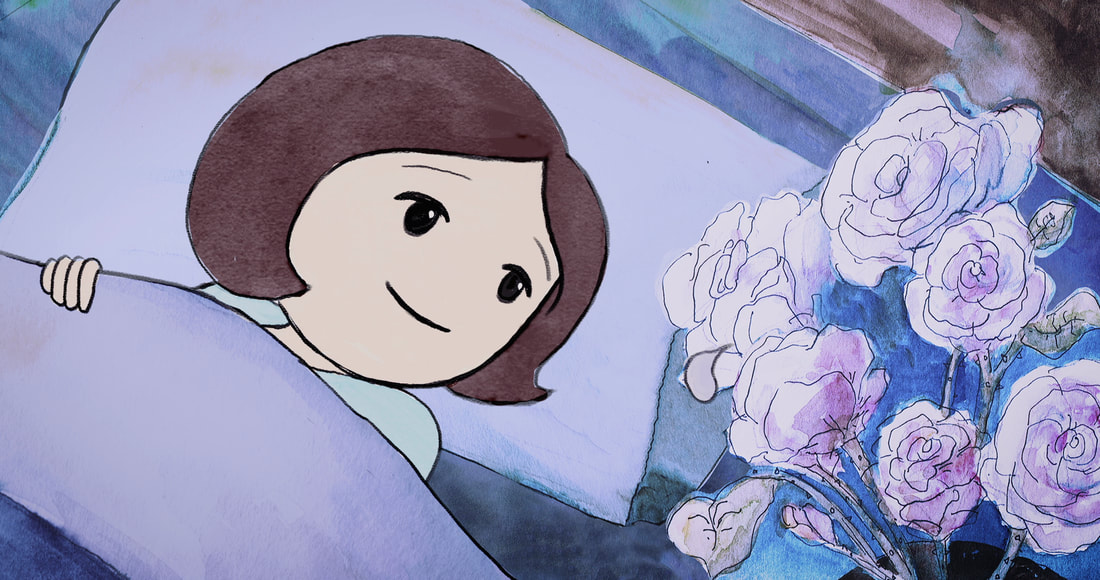
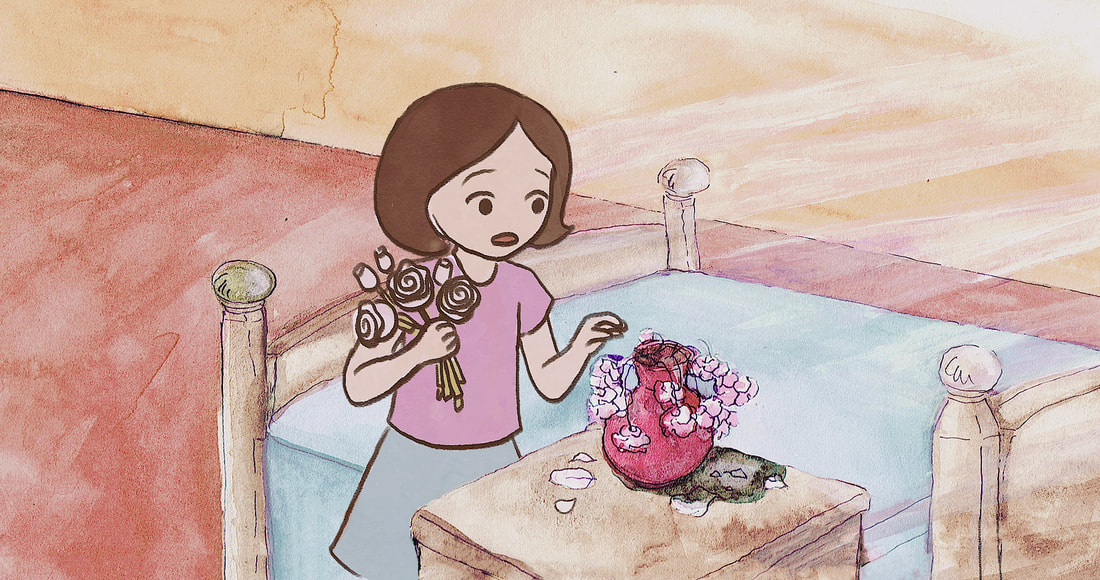

 RSS Feed
RSS Feed
